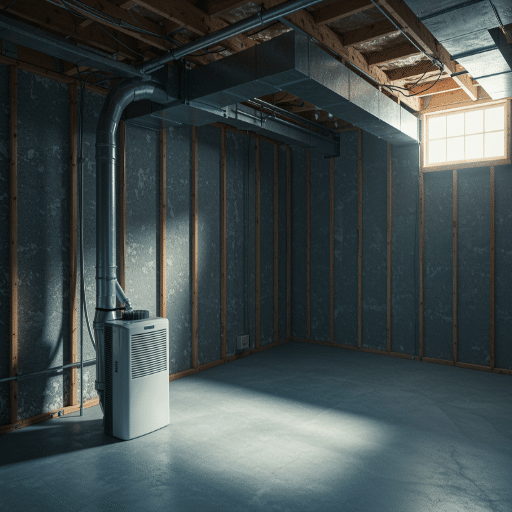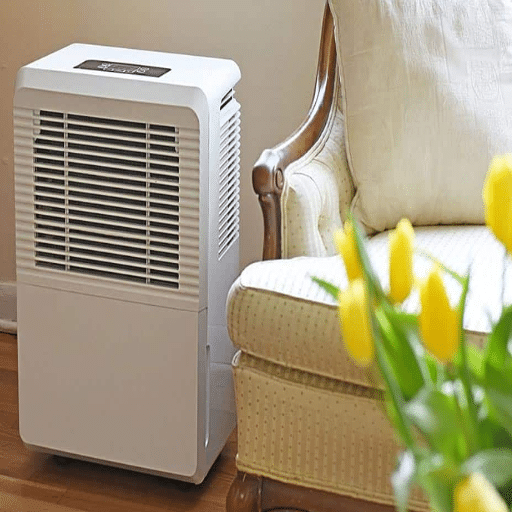Allergies can turn everyday life into a constant struggle, leaving you searching for ways to breathe easier and feel more comfortable at home. One solution often touted is the use of dehumidifiers, but do they really make a difference in managing allergy symptoms? This guide dives deep into the connection between humidity and allergens such as mold, dust mites, and mildew, helping you uncover how dehumidifiers may play a role in creating a healthier indoor environment. Whether you’re a seasonal allergy sufferer or dealing with year-round sensitivities, this article will equip you with the knowledge to decide if a dehumidifier could be the key to your allergy relief strategy.
How Do Dehumidifiers Improve Allergy Symptoms?
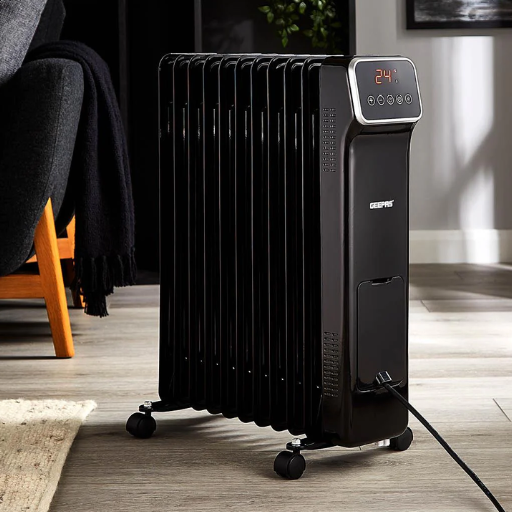
Dehumidifiers improve allergy symptoms by reducing excess moisture in the air, which helps limit the growth of common allergens like mold, mildew, and dust mites. These allergens thrive in humid conditions, and by maintaining optimal indoor humidity levels—typically between 30% and 50%—a dehumidifier creates an environment where they are less likely to grow. This can help reduce exposure to these triggers, making the air easier to breathe and minimizing allergy-related discomfort. For individuals with sensitivities, a dehumidifier can be an effective tool to enhance overall indoor air quality and promote a healthier home environment.
Understanding How Dehumidifiers Remove Excess Moisture From The Air
Dehumidifiers work by pulling in the moist air from their surroundings and extracting the excess water from it. The process typically involves a fan that draws the air into the dehumidifier and passes it over coils cooled by a refrigeration system. When the warm, humid air contacts these cold coils, the moisture condenses into water droplets, which are collected in a reservoir or drained away. The now drier air is then reheated slightly and released back into the room to maintain a comfortable environment.
Modern dehumidifiers are designed with efficiency in mind, often using energy-saving technologies to reduce power consumption. For instance, Energy Star-certified dehumidifiers are reported to use 15% less energy than standard models while still effectively removing up to 50 pints of moisture per day in areas with high humidity levels. By controlling humidity, these devices help not only in reducing allergens but also in preventing structural damage caused by mold, mildew, and condensation, protecting homes over the long term.
The Connection Between High Humidity And Allergy Symptoms
High humidity makes the climate more favorable for allergens like mold, mildew, and dust mites. Some things that are common triggers of allergic reactions, such as mold spores tend to grow in damp areas where moisture exceeds 50%. Dust mites, which are tiny organisms that make allergies worse, also thrive in areas of high humidity. It is estimated that over 70% relative humidity dust mites flourish. Research shows that lowering indoor humidity levels to around 30% to 50% can greatly help people suffering with allergies.
Excessive moisture not only makes respiratory problems worse but also makes allergens that float in the air more difficult to get rid of due to their association with sneezing, coughing, asthmatic attacks, and even sore eyes. Bear in mind allergens tend to lose activity when there are low humidity levels.
How Reduced Moisture Helps Allergy Sufferers
High humidity levels in indoor environments can intensify allergy symptoms by creating a breeding ground for mold, mildew, and dust mites. Studies have shown that dust mites thrive at relative humidity levels above 50%, while mold growth can begin at levels as low as 60%. By reducing excess moisture in the air, homeowners can significantly limit the conditions that foster these allergens.
Using a dehumidifier or air conditioning system, for example, can lower indoor humidity to 30–50%, which is considered the optimal range for preventing allergen proliferation. This reduction not only inhibits the survival of dust mites but also decreases the production of mold spores, both of which are major triggers for allergic rhinitis, asthma, and other respiratory issues.
Additionally, controlling indoor humidity can improve air circulation, as overly damp air feels heavier and more difficult to breathe. For allergy sufferers, this creates a more comfortable and health-supporting living environment, reducing the frequency of inflamed sinuses, coughing, and watery eyes. Taking proactive steps to manage indoor moisture is not just about comfort—it is critical for protecting the overall health of individuals prone to allergies or respiratory sensitivities.
Can Dehumidifiers Help Control Dust Mites And Mold Growth?
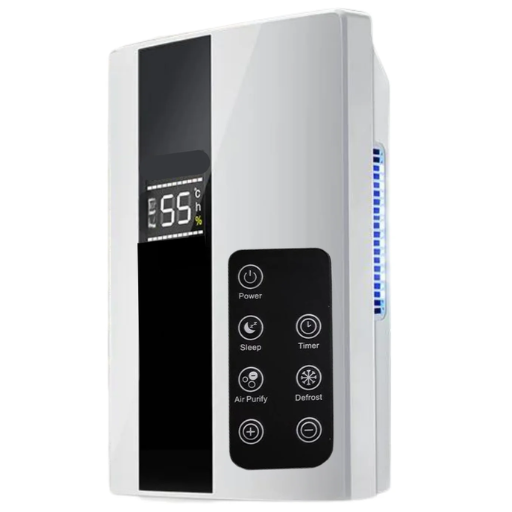
Yes, dehumidifiers can help control dust mites and mold growth. Dust mites thrive in high humidity environments, as they absorb moisture from the air. By keeping indoor humidity levels below 50%, dehumidifiers create conditions where dust mites are less likely to survive. Similarly, mold requires moisture to grow and spread. Reducing excess humidity in the air limits mold’s ability to develop on surfaces, offering an effective way to prevent and control its presence in the home.
Dust Mites And Their Relationship To Indoor Humidity Levels
Dust mites are microscopic creatures that thrive in warm and humid environments, making indoor spaces with high humidity particularly vulnerable to their proliferation. Studies indicate that dust mites require a relative humidity of around 70% to survive and reproduce effectively. When humidity levels drop below 50%, their ability to thrive diminishes significantly, which is why controlling indoor air moisture is crucial in reducing their population.
One of the critical issues with dust mites is their allergenic impact, primarily caused by their waste particles and decomposed bodies. According to research, over 20 million Americans experience allergies triggered by dust mites, contributing to respiratory issues such as asthma and allergic rhinitis. Proper humidity control through dehumidification or air conditioning systems not only alleviates these allergens but also curtails the mites’ ability to absorb the moisture they need to survive.
Additionally, mattresses, upholstery, carpets, and bedding are common hotspots for dust mites since these items retain warmth and moisture. Maintaining low humidity alongside regular cleaning routines, such as washing bedding in hot water (at least 130°F), can greatly reduce dust mite allergens in the home. Employing efficient household strategies to manage indoor environments is an essential step toward improving overall air quality and reducing allergenic threats.
Preventing Mold And Mildew With Proper Humidity Control
Mold and mildew thrive in damp, humid environments, making humidity control a critical factor in prevention. According to studies, maintaining indoor humidity levels between 30% and 50% significantly reduces the risk of mold growth. Using a hygrometer to monitor humidity levels can help ensure your space remains within this ideal range. Additionally, areas prone to moisture, such as bathrooms, kitchens, and basements, benefit from the use of exhaust fans or dehumidifiers to remove excess moisture from the air.
Ensuring proper ventilation is another key strategy—regularly opening windows and keeping air circulating can help prevent moisture buildup. It is equally important to address water leaks promptly, as even small leaks can create conditions conducive to mold. Cleaning and drying areas within 24-48 hours after water exposure is crucial to inhibit mold development. For households located in regions with high rainfall or humidity, waterproofing foundations and using moisture-resistant materials for construction and remodeling projects can add an extra layer of protection against mold and mildew.
Optimal Relative Humidity For Reducing Allergens
Maintaining an optimal relative humidity level is critical for minimizing allergens such as mold, dust mites, and bacteria in indoor environments. Studies consistently indicate that keeping indoor humidity between 30% and 50% significantly reduces the survival rate of these allergens. Dust mites, for instance, thrive in environments where humidity exceeds 50%, while lower humidity levels actively inhibit their reproduction. On the other hand, extremely low humidity—below 30%—can dry out mucous membranes, potentially aggravating respiratory issues.
Using tools like hygrometers to monitor indoor humidity is a practical starting point. Additionally, devices such as dehumidifiers and humidifiers can help uphold appropriate humidity levels throughout the year. A report from the Environmental Protection Agency (EPA) highlights that households that regularly maintain humidity in the ideal range experience a marked improvement in air quality and a reduction in allergen triggers. Balancing ventilation systems, sealing air leaks, and managing moisture sources are all essential steps in creating an allergen-safe indoor space.
Dehumidifiers Vs. Air Purifiers: Which Is Better For Allergies?
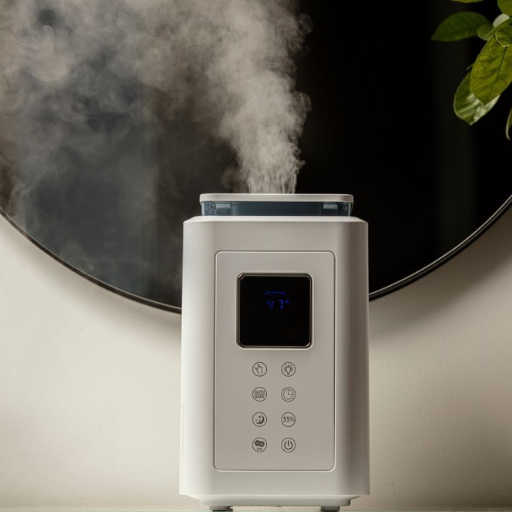
When it comes to managing allergies, the choice between a dehumidifier and an air purifier depends on the specific allergens in your home. Dehumidifiers are excellent for controlling moisture levels, which helps to reduce mold, mildew, and dust mites—common allergy triggers that thrive in humid environments. On the other hand, air purifiers work by filtering airborne particles like pollen, pet dander, and dust, making them effective for addressing allergies caused by airborne irritants.
If your allergies are primarily caused by high humidity or mold, a dehumidifier is the better choice. However, if airborne allergens are the main concern, an air purifier would be more effective. For comprehensive relief, some households benefit from using both devices in tandem.
Comparing How Air Purifiers And Dehumidifiers Work For Allergy Relief
Air purifiers and dehumidifiers tackle the issue of allergies in distinct yet complementary ways. Air purifiers focus on cleaning the air by capturing and removing airborne particles like pollen, dust mites, mold spores, and pet dander through advanced filtration systems, such as HEPA filters. High-efficiency particulate air (HEPA) filters can remove up to 99.97% of particles as small as 0.3 microns, ensuring cleaner air quality for individuals sensitive to allergens.
On the other hand, dehumidifiers regulate the moisture in the air by reducing humidity levels. A relative humidity level between 30% and 50% is considered optimal for controlling allergens such as mold and dust mites, which thrive in moist environments. By maintaining such conditions, dehumidifiers not only minimize the growth of these allergens but also improve overall indoor comfort, especially in areas prone to dampness.
Studies indicate that using these devices in tandem can amplify their benefits. For example, reducing humidity with a dehumidifier lowers the likelihood of mold spores developing, while an air purifier ensures any spores already present are captured and removed from the air. Together, these solutions create an environment that is significantly less hospitable to allergy triggers, offering more comprehensive relief to those suffering from seasonal or chronic allergies.
When You Need Both Devices For Maximum Allergy Protection
Using a dehumidifier and air purifier together can be particularly useful in combating allergens in the home. Research indicates that within 30 to 50% humidity levels indoors, allergens, such as dust mites, mold, and others, can be greatly mitigated. Dehumidifiers make it possible to strike this balance by getting rid of excess moisture in the air.
Additionally, air purifiers that have HEPA filters are able to capture a staggering 99.97% of airborne particles which are 0.3 microns or larger. These include pollen, pet hair, and even mold spores. The combination of these two devices greatly helps homeowners since airborne irritants and mold won’t have the chance to form. This approach works best during the allergy season or when a region is more humid than usual.
As an example, studies indicate that houses in areas of high humidity report a 15-20% increase in allergy complaints when sufficient measures are not taken to control the environment. Using this two-pronged approach not only enhances the indoor air quality but also improves breathing health by reducing encounters with a variety of allergens.
HEPA Filtration And Humidity Control: Understanding The Differences
HEPA (High-Efficiency Particulate Air) filtration and humidity control serve distinct yet complementary roles in improving indoor air quality. HEPA filters are designed to capture 99.97% of airborne particles as small as 0.3 microns, including dust, pollen, pet dander, and even some bacteria and viruses. This makes them highly effective for individuals dealing with allergies or respiratory conditions, as these microscopic contaminants are often the primary triggers of such issues. Modern HEPA filters are widely used in air purifiers, HVAC systems, and even vacuum cleaners, significantly reducing the concentration of allergens and irritants in indoor spaces.
On the other hand, humidity control addresses the regulation of moisture levels in the air, which has a direct impact on health and comfort. According to studies, maintaining indoor humidity levels between 30% and 50% minimizes the growth of mold, dust mites, and bacteria—all of which thrive in excessively humid environments. Conversely, overly dry air can contribute to respiratory irritation, causing discomfort for those with sensitive airways. Dehumidifiers and humidifiers play a crucial role here, depending on whether the indoor air needs to be dried or supplemented with moisture.
When combined, HEPA filtration and proper humidity control create a synergistic solution to indoor air quality challenges. For example, in households located in regions with high humidity, the use of a dehumidifier reduces moisture, which in turn prevents allergens like mold spores from proliferating. Simultaneously, a HEPA filter traps these and other airborne pollutants. This dual approach leads to cleaner, healthier indoor environments, and better overall respiratory well-being.
Do You Need A Dehumidifier For Asthma And Allergies?
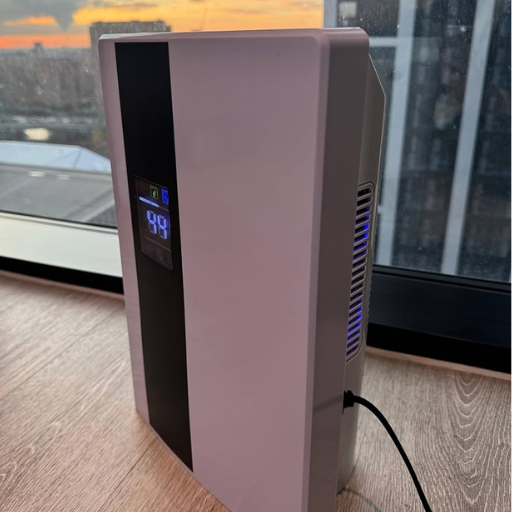
Yes, a dehumidifier can be beneficial for managing asthma and allergies, especially in environments with high humidity. Excess moisture in the air can promote the growth of allergens like mold and dust mites, which can trigger symptoms. By reducing humidity levels to a comfortable range of 30-50%, a dehumidifier helps minimize these allergens, leading to better air quality and potentially fewer respiratory issues. However, it is important to pair a dehumidifier with other measures, like regular cleaning and the use of air purifiers, for optimal results.
Signs Your Home’s Air Quality Is Affecting Asthma Symptoms
Poor air quality inside the home can trigger or worsen asthma symptoms, impacting overall respiratory health. One key sign to watch for is an increase in respiratory issues such as frequent coughing, wheezing, or shortness of breath, especially during or after spending extended periods indoors. Additionally, persistent nasal congestion or sinus pressure may indicate airborne irritants like dust, pet dander, or chemical pollutants.
Another indicator is a spike in asthma attacks or flare-ups, particularly during specific activities like cleaning, cooking, or sleeping, when exposure to allergens or irritants might be higher. Studies show that exposure to volatile organic compounds (VOCs), which are commonly found in air fresheners, paints, and household cleaners, can aggravate asthma-related inflammation in sensitive individuals.
Physical environments can also provide critical clues. If you notice visible signs of mold growth, condensation on windows, or a stale, musty odor, these might signal excessive indoor humidity, fostering the presence of mold spores and dust mites—both prominent asthma triggers. According to environmental health research, prolonged exposure to these elements can significantly impair respiratory function over time.
Finally, unexplained fatigue or trouble sleeping could be linked to poor air quality, as disrupted breathing during sleep reduces oxygen intake and diminishes rest quality. Monitoring these signs and considering an air quality assessment or tailored interventions can help mitigate risks and improve overall well-being for individuals with asthma.
Identifying Indoor Allergens That Respond To Humidity Control
Indoor allergens, such as dust mites, mold spores, and pet dander, are often significantly influenced by humidity levels within the home. Research shows that dust mites thrive in environments with a relative humidity above 50%, as moisture provides the ideal conditions for their reproduction and survival. Controlling indoor humidity, typically keeping it between 30-50%, can help reduce their populations and minimize their impact on individuals prone to allergies.
Mold spores, another common allergen, flourish in damp or humid conditions, especially in areas such as bathrooms, basements, and kitchens. High humidity accelerates mold growth on surfaces and releases spores into the air, aggravating respiratory conditions like asthma and causing allergic reactions. Studies indicate that homes with indoor humidity consistently kept under 60% show a marked reduction in mold growth.
Additionally, excessive humidity allows pet dander to linger in the air longer, intensifying the effects for those allergic to animals. By utilizing tools like dehumidifiers and proper ventilation systems, it becomes possible to create an environment less conducive to allergen proliferation. Combining humidity control with regular cleaning and maintenance practices presents an effective strategy for improving indoor air quality and managing allergy symptoms efficiently.
How Dehumidifiers Can Help Alleviate Asthma And Allergy Symptoms
Dehumidifiers play a crucial role in reducing humidity levels indoors, creating an environment that is less hospitable for common allergens like mold, mildew, and dust mites. According to numerous studies, humidity levels above 50% can foster the growth of these irritants, which are known to exacerbate asthma and allergy symptoms. By maintaining indoor humidity between 30% and 50%, dehumidifiers can significantly decrease allergen levels in the air, contributing to improved respiratory health.
Research indicates that dust mites, a major allergy trigger, thrive in environments with relative humidity above 60%. Similarly, mold spores—a frequent asthma and allergy irritant—require moisture to grow and spread. Dehumidifiers effectively reduce excess moisture, thereby limiting the proliferation of these allergens. For instance, models equipped with advanced filtration systems not only control humidity but also filter airborne particles, further improving indoor air quality.
Additionally, using a dehumidifier in tandem with regular cleaning can amplify its benefits. For households with pets, dehumidifiers can help reduce airborne pet dander, which tends to stick to dust particles in the air. Some devices now feature smart technology that monitors humidity in real time, ensuring optimal levels are maintained effortlessly.
What’s The Ideal Humidity Level For Allergy Relief?

The ideal humidity level for allergy relief is typically between 30% and 50%. Maintaining this range helps limit the growth of allergens such as mold, dust mites, and mildew, which thrive in higher humidity. Levels below 30% can cause dry air, irritating respiratory passages and worsening allergy symptoms. Using a hygrometer to measure indoor humidity and a quality dehumidifier to regulate it can help ensure a comfortable and healthy environment.
Finding The Perfect Moisture Balance In Your Home
To find the perfect moisture balance in my home, I focus on keeping indoor humidity between 30% and 50%. I use a hygrometer to monitor humidity levels regularly and a dehumidifier if things get too damp. By doing this, I reduce the risk of allergens like mold and dust mites growing, while also preventing the air from becoming uncomfortably dry. It’s all about maintaining that sweet spot for health and comfort.
Monitoring Indoor Air Quality For Allergy Management
Maintaining clean and healthy indoor air is crucial for managing allergies, as poor air quality can exacerbate symptoms and trigger allergic reactions. The first step is to identify common indoor air pollutants, such as dust, pet dander, mold spores, and volatile organic compounds (VOCs). According to recent studies, indoor air can be two to five times more polluted than outdoor air due to these contaminants.
To effectively monitor air quality, consider investing in an indoor air quality monitor. These devices provide real-time data on particulate matter (PM2.5), humidity levels, and potential chemical pollutants. Keeping particulate matter (PM2.5) below 12 µg/m³ is essential, as higher levels can aggravate respiratory conditions. Regularly replacing air filters in HVAC systems, especially HEPA filters, can further help remove up to 99.97% of airborne particles.
Additionally, increasing ventilation by opening windows or using exhaust fans can reduce the concentration of pollutants indoors. Air purifiers equipped with activated carbon filters are also highly effective in capturing VOCs and odors. By implementing these practices and staying informed on your home’s air quality metrics, it becomes easier to create an environment that minimizes allergens and promotes overall respiratory health.
Seasonal Adjustments For Optimal Humidity Control
Maintaining the right humidity levels throughout the year is crucial for a healthy indoor environment, as both excessively high and low humidity can have adverse effects. Ideally, indoor humidity should be kept between 30% and 50%. During winter, heating systems can dry out indoor air, leading to levels below 30%, which may result in dry skin, respiratory discomfort, and static electricity. Using a humidifier can counteract this by adding moisture to the air, ensuring a more comfortable indoor atmosphere.
On the other hand, summer months often bring higher humidity levels, frequently exceeding the recommended 50%. Prolonged high humidity can encourage mold growth, dust mites, and other allergens, potentially impacting health. Dehumidifiers become essential during these conditions to extract excess moisture, maintaining air quality and preventing the spread of harmful microorganisms. Additionally, air conditioning systems with built-in dehumidification features can help regulate humidity, especially during warmer months.
Monitoring indoor humidity with a digital hygrometer is a simple and effective way to stay on top of changes throughout the year. Making seasonal adjustments using the appropriate equipment helps create a balanced environment that promotes health, comfort, and even prolongs the life of furniture and appliances susceptible to moisture-related damage.
Dehumidifier Or Humidifier: Which Helps With Allergies?
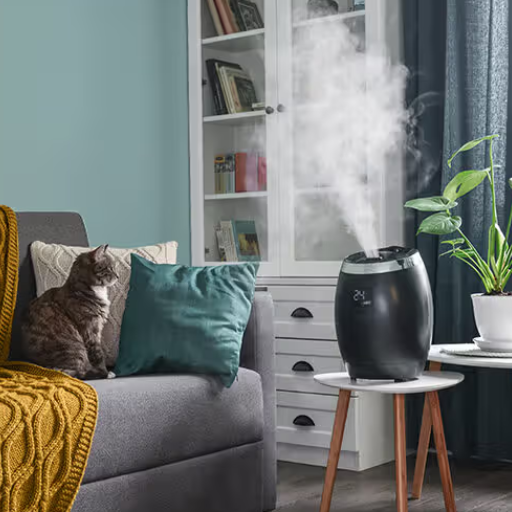
The choice between a dehumidifier and a humidifier depends on the type of allergen and the environment in your home. A dehumidifier is beneficial in reducing allergens like mold, mildew, and dust mites, which thrive in high-humidity conditions. By lowering excess moisture in the air, a dehumidifier creates an environment less suitable for these allergens. On the other hand, a humidifier can help alleviate allergy symptoms caused by dry air, such as irritated sinuses, dry skin, or a scratchy throat, by adding moisture to the air. To decide which is best, monitor your home’s humidity levels—ideally keeping them between 30-50%—and adjust based on your specific needs.
When Adding Moisture To The Air Helps Allergy Symptoms
Adding moisture to the air can help alleviate a range of symptoms caused by excessively dry conditions. Humid air can soothe irritated nasal passages, reduce inflammation in the sinuses, and relieve dryness in the throat and skin. According to health studies, maintaining indoor humidity levels between 30-50% can greatly improve comfort for individuals suffering from allergies and respiratory issues. Low humidity, especially during winter months or in dry climates, can dry out the mucous membranes in your nose and throat, making it harder for the body to trap and filter allergens effectively.
Data indicates that using a humidifier to restore moisture can help reduce the impact of airborne irritants like pollen or dust by improving the body’s natural defense mechanisms. For example, moist air prevents the nasal passages from becoming too dry, which can exacerbate allergy symptoms or even lead to nosebleeds. However, it’s equally important to avoid excessive humidity, as levels over 50% can encourage mold growth and create a hospitable environment for dust mites, both of which are common allergy triggers. Therefore, employing a hygrometer to monitor the air’s moisture level is essential for striking the right balance and ensuring optimal comfort and health.
Why Some Allergies Worsen With Dry Air
Dry air can significantly exacerbate allergy symptoms by irritating the body’s natural defense mechanisms. When the air lacks sufficient moisture, it can strip the nasal passages of their protective mucus layer, which serves as a barrier against allergens like pollen, dust, and pet dander. According to studies, low humidity levels—typically below 30%—can make the airways more sensitive and inflamed, increasing discomfort for those with allergies or respiratory conditions.
Additionally, dry air often increases particulate matter in the environment. With less moisture to weigh particles down, allergens remain suspended in the air for longer periods, making them more likely to be inhaled. This has been shown to heighten exposure to triggers, especially during winter months when heated indoor environments are prevalent. For instance, research published in medical journals highlights that indoor heating systems are notorious for reducing humidity levels, often causing air in homes to fall well below comfortable and healthy ranges.
Managing indoor humidity levels between 30-50% can help alleviate these issues. The use of humidifiers and air purifiers has been proven effective in maintaining a healthy balance. Such precautions not only improve air quality but also reduce the intensity of allergic reactions, offering relief to those who suffer from seasonal or chronic allergies.
Choosing The Right Device Based On Your Specific Allergies
Selecting the right device to manage indoor air quality effectively depends on understanding the specific allergens that impact you. Common allergens include pollen, dust mites, pet dander, and mold spores, each requiring different filtration and humidity management strategies.
For individuals primarily affected by pollen or dust mites, a high-efficiency particulate air (HEPA) filter is essential. HEPA filters can trap up to 99.97% of airborne particles as small as 0.3 microns, making them a reliable choice for reducing these allergens. Air purifiers equipped with HEPA filters often come with additional features such as activated carbon filters, which can help neutralize odors and harmful VOCs (volatile organic compounds).
Pet owners struggling with dander and hair should look for air purifiers specifically designed for this purpose, often marketed with specialized pre-filters that capture larger particles like pet fur before they clog the main HEPA filter. Additionally, choosing a model with a combination of HEPA and odor filters can help address pet smells effectively.
For those battling mold spores or living in high-humidity areas, a dehumidifier is a crucial addition. Maintaining humidity levels between 30-50% prevents the growth of mold and mildew, while some hybrid models integrate dehumidifying and air-purifying functions to tackle both moisture and airborne allergens simultaneously.
Consider the size and capacity of the device in relation to your room or home. Coverage recommendations are often provided by manufacturers, ensuring the device will function effectively in the intended space. Personal monitoring of indoor air quality using smart sensors that pair with your devices can also provide useful data to optimize performance.
Investing in the right device tailored to your allergy needs can significantly improve your quality of life by creating a safer and more comfortable home environment.
Reference Sources
-
Reduction of House Dust Mite Allergens After Dehumidifier Use3:
- Methodology: This study involved 10 homes with asthmatic, mite-sensitive patients. Dehumidifiers were used in one bedroom per home for three months. Dust samples were collected from mattresses to measure allergen levels.
- Findings: Significant reductions in Der p I and Der II allergens were observed in rooms with dehumidifiers compared to controls. However, the study noted challenges in maintaining low humidity in areas with consistently high outdoor humidity.
-
A Randomized Trial of Dehumidification in the Control of House Dust Mites4:
- Methodology: A randomized controlled trial with 76 homes divided into three groups: dehumidifier use, behavioral interventions to reduce humidity, and no intervention. Measurements included humidity levels, mite counts, and allergen levels over a year.
- Findings: Dehumidifiers reduced relative humidity and showed a shift in homes from having mites to being mite-free. However, the reduction in allergen levels was not significantly greater than in other groups, suggesting limited efficacy.
-
Reducing Relative Humidity to Control Dust Mites and Allergens in Temperate Climates5:
- Methodology: Over 17 months, homes were divided into groups maintaining relative humidity (RH) below 51% using dehumidifiers and air conditioning, or higher RH through other methods. Dust mite and allergen densities were measured.
- Findings: Homes with RH below 51% had significantly fewer mites and allergens compared to those with higher RH. This study highlighted the practicality of maintaining low RH for allergen control in temperate climates.
Frequently Asked Questions (FAQs)
Q: How does using a dehumidifier help with allergies?
A: Using a dehumidifier can help relieve allergy and asthma symptoms by removing excess moisture out of the air, which can reduce the presence of allergens like mold spores and dust mites in your home.
Q: Can dehumidifiers help with a stuffy nose?
A: Yes, dehumidifiers can help improve a stuffy nose by reducing the water vapor in the air, making it easier to breathe for people with allergies or asthma.
Q: What is the recommended humidity level to prevent indoor allergies?
A: The American Academy of Allergy, Asthma, and Immunology suggests maintaining indoor humidity levels between 30 to 50 percent to help prevent indoor allergies.
Q: Do dehumidifiers work in a crawl space?
A: Yes, dehumidifiers can be very effective in a crawl space to remove moisture, thus preventing mold growth and reducing allergens.
Q: Are there any alternatives to dehumidifiers for allergy relief?
A: Alternatives to dehumidifiers include using air conditioners to reduce humidity, running a humidifier in cases where the air is too dry, or using a desiccant to absorb moisture.
Q: Can dehumidifiers help with both allergy and asthma symptoms?
A: Dehumidifiers can help improve both allergy and asthma symptoms by reducing humidity and limiting the growth of allergens like mold and dust mites.
Q: How do mold spores affect people with allergies?
A: Mold spores can trigger allergy and asthma symptoms, causing issues such as a stuffy nose, sneezing, and respiratory problems for people with allergies.
Q: What role does water vapor play in indoor allergies?
A: High levels of water vapor in the air can increase the growth of allergens like dust mites and mold, contributing to indoor allergies.
Q: How do humidifiers help in managing allergy symptoms?
A: While dehumidifiers remove excess moisture, humidifiers help by adding moisture when the air is too dry, which can prevent dry skin and respiratory issues.
Q: What do organizations like the Asthma and Allergy Foundation of America recommend?
A: Organizations like the Asthma and Allergy Foundation of America recommend maintaining proper humidity levels and using air purifying solutions to help relieve allergy and asthma symptoms.


